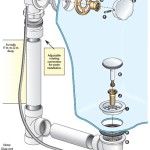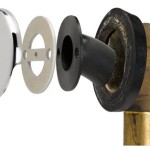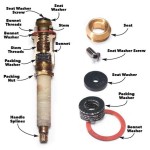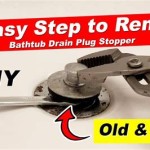Reglazing Bathtub: Pros and Cons
Updating a bathroom can be an expensive endeavor. If your bathtub is showing signs of wear and tear, reglazing might offer a more affordable alternative to complete replacement. Reglazing involves applying a new layer of porcelain enamel over the existing surface, effectively giving your bathtub a fresh look. While it can be a tempting solution, it's crucial to understand both the advantages and disadvantages of reglazing before making a decision.
Pros of Reglazing a Bathtub
Reglazing offers a number of appealing benefits that can make it a viable option for bathroom renovations:
1. Cost-Effective
Reglazing a bathtub is significantly cheaper than replacing it altogether. This cost-effectiveness is particularly attractive for homeowners on a tight budget. While the initial cost might seem appealing, it's essential to factor in potential future costs related to repairs or re-reglazing, as the process might not be a long-term solution.
2. Time-Saving
Reglazing is a relatively quick process compared to installing a new tub. It often takes only a day or two to complete, minimizing disruption to your bathroom routine. This is a significant advantage, especially for individuals who can't afford prolonged periods of bathroom downtime.
3. Minimal Mess
Reglazing creates significantly less mess than a full bathroom renovation. The process involves minimal demolition and cleanup, making it an attractive option for those who prefer minimal disruption to their home. However, it's important to note that proper ventilation and precautions are still necessary, ensuring that the fumes from the reglazing materials are properly contained and do not pose health risks.
4. Variety of Colors and Finishes
Reglazing allows for customization with a wide array of colors and finishes. You can choose a shade that complements your bathroom decor, adding a touch of personal style to your space. This customization option is particularly attractive for homeowners who prioritize aesthetics and desire a unique look for their bathroom.
Cons of Reglazing a Bathtub
While reglazing presents several benefits, it also comes with certain drawbacks that need careful consideration:
1. Durability Concerns
Reglazed bathtubs are generally less durable than new tubs. The new layer of enamel can be prone to chipping, cracking, or peeling over time, especially with heavy use or improper care. This can lead to frequent repairs or even the need for a complete re-reglazing, adding further costs to the initial investment.
2. Limited Warranty
Reglazing companies often provide limited warranties on their work, typically covering defects in workmanship for a short period. The coverage for wear and tear is usually minimal, leaving homeowners responsible for any issues that arise after the warranty expires.
3. Potential for Odor
The reglazing process involves using chemicals that emit strong odors. While the fumes dissipate over time, they can be a nuisance during the application and drying process. This is something to consider if you are sensitive to strong smells or have respiratory concerns.
4. Not Suitable for All Bathtubs
Reglazing is not suitable for all types of bathtubs. For example, it might not be feasible on tubs with extensive damage, porous surfaces, or certain types of materials. It's crucial to consult with a professional reglazing company to assess the condition of your tub and determine its suitability for reglazing.
Considerations for Reglazing
Before deciding if reglazing is the right choice for your bathroom, consider the following factors:
1. Age and Condition of the Bathtub
The age and condition of your existing bathtub play a significant role in the success of reglazing. If your tub has extensive damage, is severely cracked, or has been previously reglazed, it might be a better option to replace it entirely. Reglazing is most effective on tubs that are relatively new and in good condition, with minimal wear and tear.
2. Frequency of Use
The frequency of bathtub use also impacts the durability of reglazing. If your bathtub is used frequently by multiple people, the reglazed surface might be prone to quicker wear and tear, requiring more frequent repairs or re-reglazing.
3. Personal Preferences and Budget
Ultimately, the decision to reglaze your bathtub comes down to your personal preferences and budget. Consider your priorities, such as aesthetics, functionality, and cost. If you prioritize cost-effectiveness and are willing to accept the potential for future repairs or re-reglazing, reglazing might be a viable option. If you prioritize durability and longevity, investing in a new bathtub might be a better long-term solution.

The Pros And Cons Of Refinishing A Bathtub Paint Denver

Bathtub Liners Vs Refinishing Napco Ltd

Bathworks Refinishing Kit Review My Honest Opinion Of Reglazing A Bathtub Diy With Christine

Tub Reglazing Vs Replacement Custom And Tile

My Painted Bathtub 5 Years Later An Honest Review Of Refinished Jacuzzi Tub

Pros And Cons Of Bathtub Refinishing Renovations

Should I Replace My Bathtub Or Reglaze It Nj Bathroom Remodeling Renovation

How To Reglaze A Bathtub And Tile Surround Daly Digs

My Painted Bathtub 5 Years Later An Honest Review Of Refinished Jacuzzi Tub

Pros And Cons Of Replacing Restoring Or Relining Your Yucky Bathtub Cleveland Com
Related Posts








